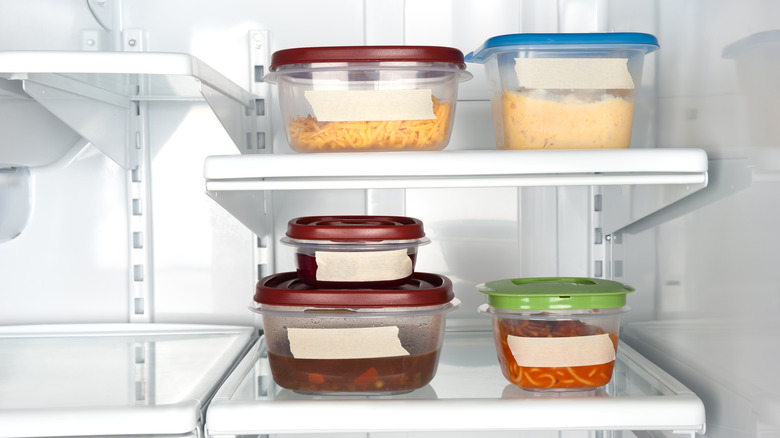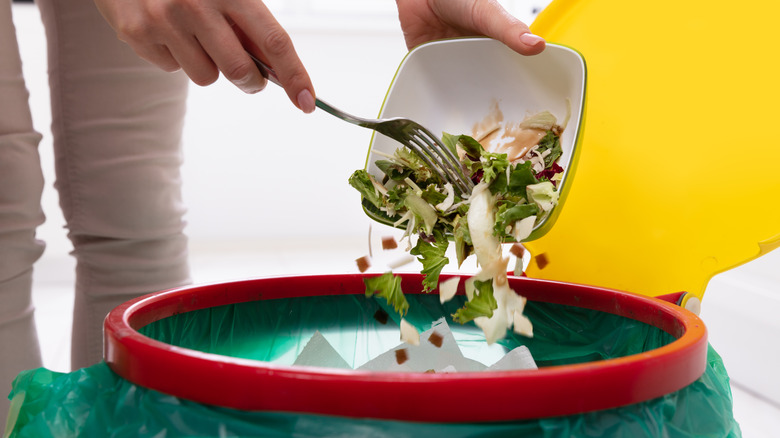The Unhealthy Mistake You Might Be Making With Leftovers
If the same leftover containers have been staring you down each time you've opened the fridge in the past week, it's time to pull them out and take inventory. Storing — and promptly eating — leftovers is a great way to cut down on food waste, as well as save some grocery bucks. But be sure to follow food safety rules, as recommended by the USDA, when packaging them up to avoid getting sick.
The USDA warns that controlling the growth of potentially dangerous foodborne bacteria is all about temperature control. Bacteria flourish in the "danger zone" temperature range between 40 and 140 Fahrenheit or between 4 and 60 Celsius. When prepared foods are sitting around too long in this temperature range, it doesn't take long to become a health risk.
Amy Shapiro, MS, RD, CDN, and owner of Real Nutrition NYC, says, "Leave leftovers out for no more than two hours at room temperature. Otherwise, bacteria grows, which is one of the biggest causes of foodborne illness," (via NBC News). If temperatures are high — think 90 degrees Fahrenheit during a summertime picnic — this window of time is reduced to just one hour. Leaving leftovers out for too long before refrigerating is one of the biggest mistakes people make with regard to food safety.
After three to four days, leftovers should be tossed
Of course, if you have a large pot of soup or the better part of a lasagna leftover, they'll obviously take a long time to cool off, and putting the steaming containers into the fridge could very well raise the refrigerator temperatures to risky levels. Because of this, the USDA recommends dividing up large amounts of hot leftovers into small, shallow containers where they can cool much more quickly (via Healthline). Katherine Zeratsky, a registered dietitian nutritionist at the Mayo Clinic, told USA Today, "You want to help that food come down to refrigerator temperatures most quickly."
Once refrigerated, most leftovers should be eaten within three to four days. Also, labeling leftover containers with the date before putting them in the fridge can help you keep track of how long they've been in there so that there's absolutely no excuse, ever, for eating that 10-day-old tuna salad.


